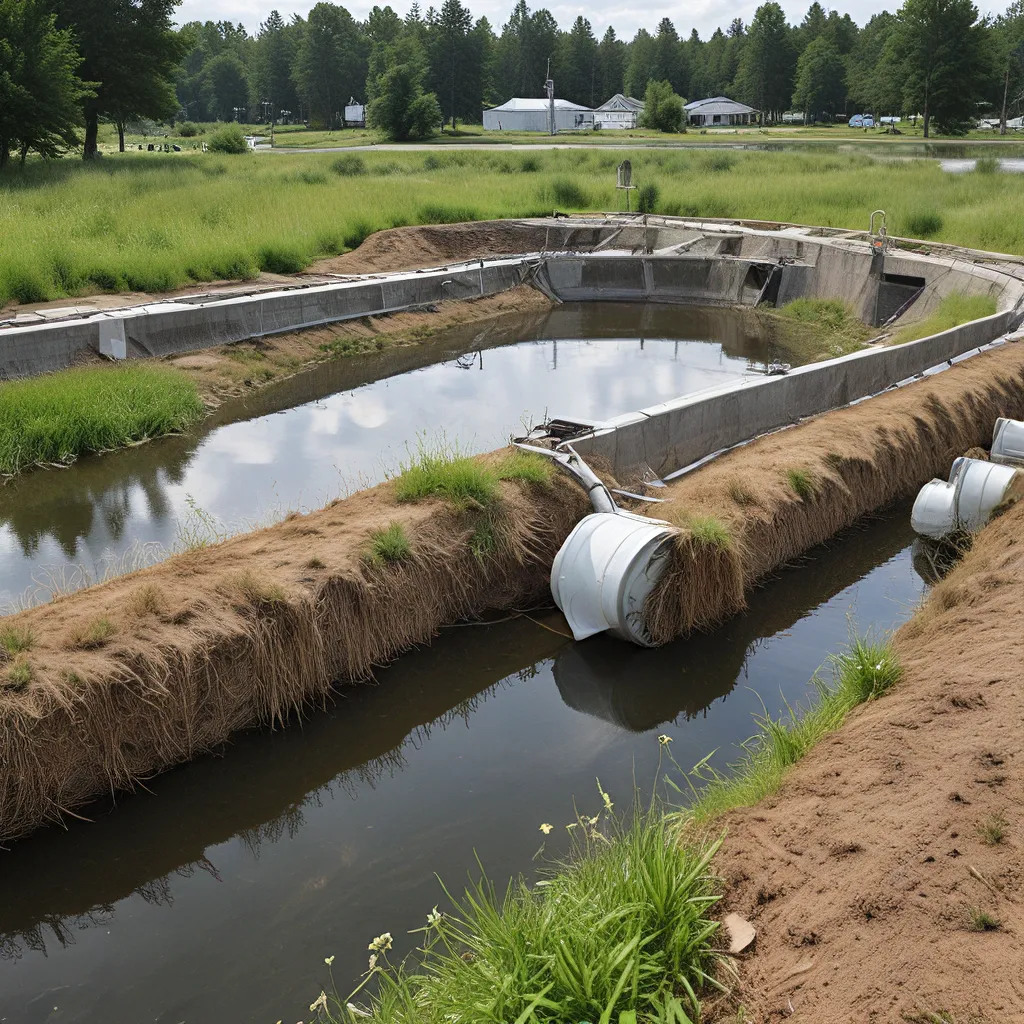
As I dive into the fascinating world of wastewater infrastructure, I can’t help but feel a sense of excitement and wonder. It’s a realm where the intricate dance between technology and nature plays out, and where we have the opportunity to create truly innovative solutions that benefit both our communities and the environment.
One approach that has been gaining traction in recent years is the concept of nature-based solutions (NbS). In the broadest sense, NbS refers to the use of ecological elements to improve urban quality of life in the face of climate change and other pressing challenges. And when it comes to wastewater management, embracing NbS can be a game-changer.
Unlocking the Power of Natural Ecosystems
At the heart of NbS lies the recognition that natural ecosystems have the incredible ability to provide a wide range of services that can enhance the sustainability and resilience of our wastewater infrastructure. These ecosystem services can include everything from water purification and nutrient recycling to flood control and carbon sequestration.
As the experts at The Nature of Cities point out, by effectively maintaining or enhancing these key ecosystem services, we can reduce emissions, remove carbon from the atmosphere, and lower climate change risks for our communities.
But the benefits of NbS go beyond just environmental factors. They can also have a significant positive impact on human well-being, providing recreational opportunities, improving air quality, and even enhancing mental health and physical activity. It’s a win-win situation – by harnessing the power of nature, we can create solutions that are not only sustainable but also bring tangible improvements to the lives of the people we serve.
Embracing the Diversity of Nature-Based Solutions
When it comes to implementing NbS in wastewater infrastructure, there is no one-size-fits-all approach. The diversity of these solutions is truly astonishing, and the key is to tailor them to the unique needs and characteristics of each community.
As the IUCN’s Green Infrastructure Guide for water management highlights, NbS can range from constructed wetlands and bioretention systems to living shorelines and permeable pavements. Each of these approaches harnesses the power of nature in its own way, whether it’s through the water purification capabilities of wetlands or the flood-mitigating properties of permeable surfaces.
Interestingly, the White House’s recent report on nature-based solutions also emphasizes the importance of incorporating indigenous and local knowledge into the design and implementation of these systems. By tapping into the centuries-old wisdom of communities who have long-standing relationships with their local ecosystems, we can develop solutions that are not only more effective but also more culturally relevant and aligned with the values of the people they serve.
Navigating the Complexity of Nature-Based Solutions
Of course, embracing NbS in wastewater infrastructure is not without its challenges. The complexity of these systems, the need for interdisciplinary collaboration, and the uncertainty surrounding their long-term performance can all present significant hurdles.
But I would argue that these challenges are not insurmountable. In fact, they present us with an opportunity to push the boundaries of what’s possible and to create truly innovative solutions that can transform the way we manage our water resources.
For example, at Alpha Wastewater, we’ve been exploring the use of hybrid systems that combine traditional infrastructure with nature-based elements. By integrating constructed wetlands, bioswales, and other ecological features into our wastewater treatment processes, we’ve been able to enhance the removal of nutrients and other pollutants, while also providing valuable habitat for local wildlife and improving the overall aesthetic of the site.
The Future of Wastewater Infrastructure
As I look to the future of wastewater infrastructure, I’m filled with a sense of optimism and possibility. The more we embrace the power of nature-based solutions, the more we’ll be able to create resilient, sustainable, and community-centric systems that not only address our water management needs but also enrich the natural landscapes and ecosystems that are so vital to our well-being.
Of course, the road ahead is not without its challenges. There will be ongoing debates and uncertainties around the long-term performance and scalability of these solutions. And we’ll need to continue pushing the boundaries of research and innovation to uncover new and better ways to harness the power of nature.
But I’m confident that by working together, by embracing diverse perspectives and knowledge, and by remaining open to the transformative potential of nature-based solutions, we can create a future where our wastewater infrastructure and our natural environments thrive in perfect harmony. It’s a future that I’m excited to be a part of, and I hope you’ll join me on this journey.